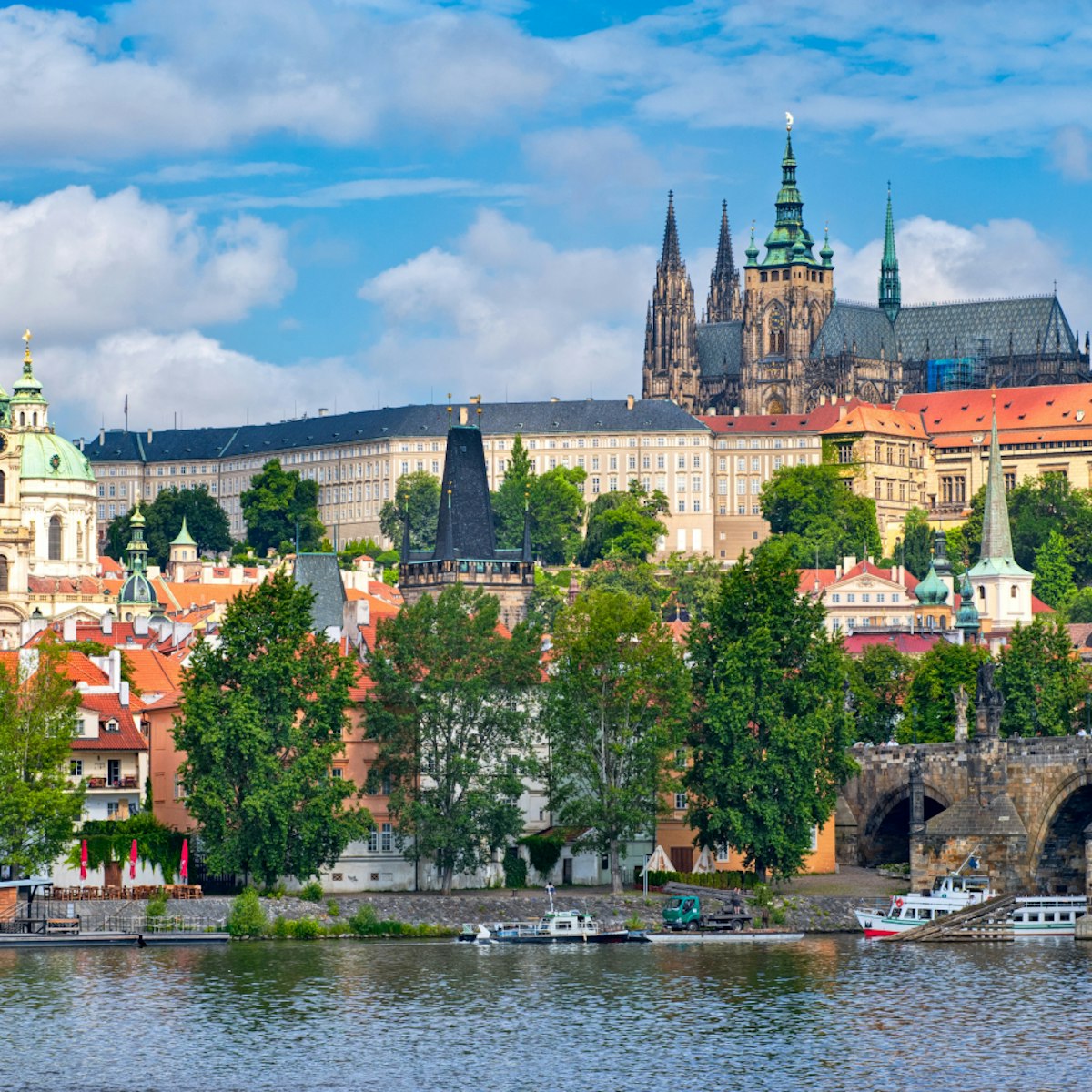The Loreta is a baroque place of pilgrimage founded by Benigna Kateřina Lobkowicz in 1626, designed as a replica of the supposed Santa Casa (Sacred House; the home of the Virgin Mary) in the Holy Land. Legend says the original Santa Casa was carried by angels to the Italian town of Loreto as the Turks were advancing on Nazareth. These replicas were once found across Catholic Europe (50 in the Czech lands alone), but the Prague Loreta is extra special.
The old Santa Casa is in the centre of a courtyard complex, surrounded by cloistered arcades, churches and chapels. The interior is adorned with 17th-century frescoes and reliefs depicting the life of the Virgin Mary, and an ornate silver altar with a wooden effigy of Our Lady of Loreto. Above the entrance to the courtyard, 27 bells, made in Amsterdam in the 17th century, play ‘We Greet Thee a Thousand Times’ on the hour.
Behind the Santa Casa is the Church of the Nativity of Our Lord (kostel Narození Páně), built in 1737 to a design by Kristof Dientzenhofer. The claustrophobic interior includes two skeletons of the Spanish saints Felicissima and Marcia, dressed in aristocratic clothing with wax masks concealing their skulls.
At the corner of the courtyard is the unusual Chapel of Our Lady of Sorrows (kaple Panny Marie Bolestné), featuring a crucified bearded lady. She was St Starosta, pious daughter of a Portuguese king who promised her to the king of Sicily against her wishes. After a night of tearful prayers she awoke with a beard, the wedding was called off, and her father had her crucified. She was later made patron saint of the needy and the godforsaken.
The church’s treasury (1st floor) has been ransacked several times over the centuries, but it remains a bastion of over-the-top religious bling centred on the famous, 90cm-tall Prague Sun (Pražské slunce), made of solid silver and gold and studded with 6222 diamonds.







